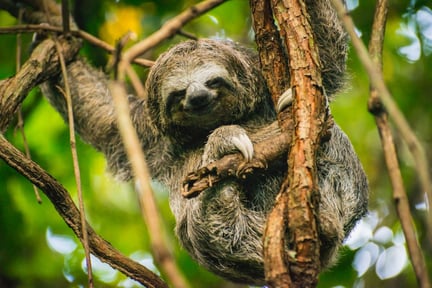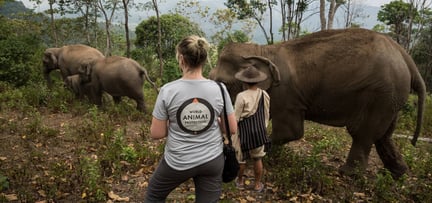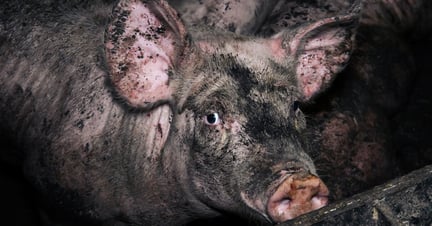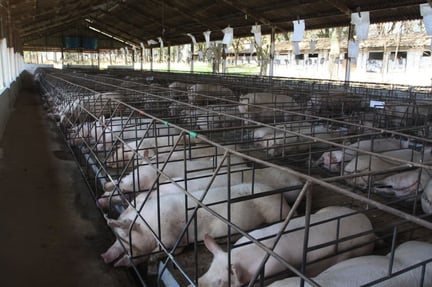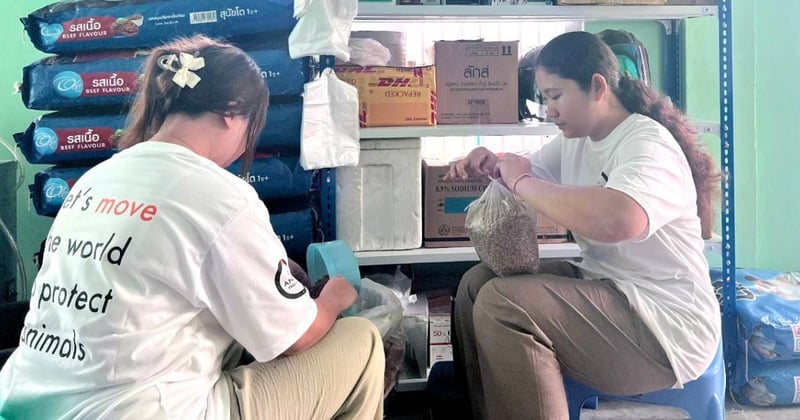
Urgent Animal Relief Efforts in Mandalay Continue After Earthquake
Press release
After a devastating 7.7 magnitude earthquake struck central Myanmar, animal welfare organisations continue their urgent efforts to assist affected animals.
More than a month after the powerful 7.7 magnitude earthquake hit central Myanmar on 28 March 2025, World Animal Protection and Let’s Save The Strays, International are still on the ground, delivering vital aid to animals in urgent need.
With critical infrastructure still heavily damaged, work remains essential to supporting both the animals and the communities that care for them.
'To date, over 1,000 animals have been treated for disaster-related wounds, fractured limbs, parvovirus, distemper, infections from fights, and life-threatening reproductive emergencies - such as severe uterine infections and complications during birth - in unsterilized female animals that became unexpectedly pregnant.
'We are currently feeding up to 800 animals per day, distributing food from our small office with the help of street feeders who reach the thousands of free-roaming dogs and cats scattered in the aftermath of this disaster - surviving in garbage dumps, abandoned buildings, and monasteries.' said Amy Shoff, Chief Executive Officer of Let's Save The Strays, International.
One month after the earthquake, Mandalay continues to face severe challenges including disrupted public utilities, damaged roads, and veterinary clinics operating at limited capacity.
We understand clearly that in times of disaster, both humans and animals require urgent assistance. Helping animals not only saves their lives but also provides comfort to the affected communities who care deeply for them.
'Our experience from the 2015 Nepal earthquake taught us that long-term planning is equally crucial to immediate relief efforts,' stated Ms. Roatchana Sungthong, Country Director of World Animal Protection Thailand.
In addition to immediate relief activities, World Animal Protection and Let's Save The Strays, International have outlined longer-term plans for the next 1–3 months, which include:
- Rebuilding veterinary clinics to restore advanced veterinary care services.
- Scaling up vaccination programs to prevent disease outbreaks.
- Resuming the Trap-Neuter-Vaccinate-Return (TNVR) initiative as a key measure for controlling stray animal populations and reducing their suffering.
World Animal Protection has been committed to disaster relief for animals globally for over 50 years, delivering essential supplies such as food, clean water, veterinary treatment, and evacuation assistance in various disasters including earthquakes, floods, wildfires, and typhoons.
Over this period, the organization has conducted over 250 relief missions, saving more than 7 million animals worldwide.
Additionally, World Animal Protection actively advocates for integrating animal protection into disaster risk reduction frameworks, urging governments and communities worldwide to include animal welfare in disaster preparedness strategies.
This approach not only safeguards animals but also secures livelihoods, especially for vulnerable communities, enabling sustainable recovery after disasters.
Related content
Animals in Disasters
Disasters kill and injure millions of animals each year. We’ve been deploying to disaster zones to assist animals for 55 years – and we remind governments to take responsibility for them too
Animal Sentience
At World Animal Protection sentience is at the heart of everything we do, click to find out more.
How World Animal Protection supports animal sanctuaries
Innovative solutions
Discover our work helping venues transform to genuine, ethical animal sanctuaries, and find out how to spot a genuine sanctuary or rescue centre.

